Domestic homicide reviews: consultation analysis
We undertook a period of consultation and targeted engagement to inform the development of a Domestic Homicide Review model for Scotland. Those with lived experience of domestic abuse and those working in the field shared their views on fundamental aspects of the model.
A) Which Cases will be Reviewed
This section looked at the circumstances under which a review should be undertaken and how other relevant review processes are taken into account.
As outlined previously, Taskforce members unanimously agreed that the Scottish model will include victims killed by a partner or ex-partner (this includes adolescents in an intimate relationship). This is a category that is universally included within all Domestic Homicide Reviews that operate in other jurisdicitions and, as such, views were not sought on the inclusion of this category.
It is acknowledged that there is further work to be undertaken in relation to a number of the current high level descriptors used within the scope section. The descriptors used as part of the targeted engagement were intended to help provide further clarity and to support discussion with participants. Following on from the completion of the targeted engagement, work will be undertaken to update the descriptors used.
Scope
We wanted to find out what participants thought about the scope of Scotland’s Domestic Homicide Review model and which cases should be included within that scope. A total of eight cases were presented to participants with the option to include the case within the scope of Scotland’s Domestic Homicide Review model, exclude the case as ‘out of scope’ or ‘don’t know’. For those who thought a case should be included within the scope, we wanted to know whether participants thought the case should be included from the very beginning of the model’s implementation or introduced at a later stage.
Taking into consideration those respondents who answered the questions on scope, four out of the eight proposed cases received high support (≥90%) to be included within the scope of Scotland’s Domestic Homicide Review model. These included Domestic Abuse Related Family Homicide, Violent Resistance Homicide, Domestic Abuse Related Suicide and Children. Two case categories reached consensus (≥80%). These were Near Death and Associated Homicide. Finally, the last two cases that received the lowest consensus were Familial Homicide and Domestic Homicide-Suicide, with 75% and 71%, respectively. An overview of agreement rates can be seen in Figure (3).

1. Domestic Abuse Related Family Homicide: This is when someone who has perpetrated domestic abuse kills their partner or ex-partner and any related children aged under 18 years old.
Among those who answered this question, 98% of respondents thought that ‘Domestic Abuse Related Family Homicide’ should be included within the review scope. Of those, 97% said that is should be included from the beginning. This shows there is strong support for domestic abuse related family homicide to be included within the Scottish model and for it to be included from the outset.


“It is important that any related children who are murdered are included in the review. There is still some misunderstanding of the impact of domestic abuse on children, and how they are used to punish mothers. Including them will allow the lessons around risk to be learned by parties who perhaps are looking narrowly at the protection of the child without taking into account the impact of the abuse of the mother on the child, and the risks therein." Professional respondent with lived experience
The majority of respondents who answered this question said that ‘Domestic Abuse Related Family Homicide’ should be included as a core category within the model – “this category is part and parcel of domestic abuse”. All those responding with lived experience said that ‘Domestic Abuse Related Family Homicide’ is part of the wider manifestation of domestic abuse, and has not been recognised by authorities as such from their collective experience. Those with lived experience also said that time was of the essence, and the longer children and other family members are exposed to the domestic abuse, the worse the outcome will be.
Both professionals and professionals with lived experience said that these deaths cannot be treated in isolation and must be contextualised. Including them would ensure children are treated as victims in their own right.
Based on what respondents said, inclusion of this category will help ensure the interconnectedness between crimes and their relation to existing domestic abuse is captured, rather than treating them as separate cases. It was highlighted several times that this type of death is linked to the ‘child aggravator’ under the Domestic Abuse (Scotland) Act 2018 Act[3], and as such, the majority of respondents thought that ‘Domestic Abuse Related Family Homicide’ should be included. All professionals with lived experience emphasised the importance of differentiating between child abuse and child death and the specific context surrounding both.
Caution was advised by some professionals on the importance of taking a holistic approach to these cases, by establishing joint timelines leading up to the death for both adult/s and children, and ensuring the review process would be undertaken in parallel to a Child Death Review. Resoundingly, responses across the board said that this category would ensure patterns are captured and recognised to help in future cases of domestic abuse where early intervention involving the entire family unit is prioritised.
2. Children: This is when a child (under 18 years old) dies in a domestic abuse context. This includes all children including those not related to the victim who has suffered domestic abuse e.g., if friends of the child are also killed.
“I felt I had to safeguard my kids from the domestic abuse by alerting social services or he would have killed them just to get at me.” Respondent with lived experience
Among those who responded to this question, the ‘Children’ category received the fourth highest support to be included within the scope of Scotland’s Domestic Homicide Review model, at 90%. The majority of respondents who chose to include this category also chose to include it from the beginning of the model’s implementation, at 97%.
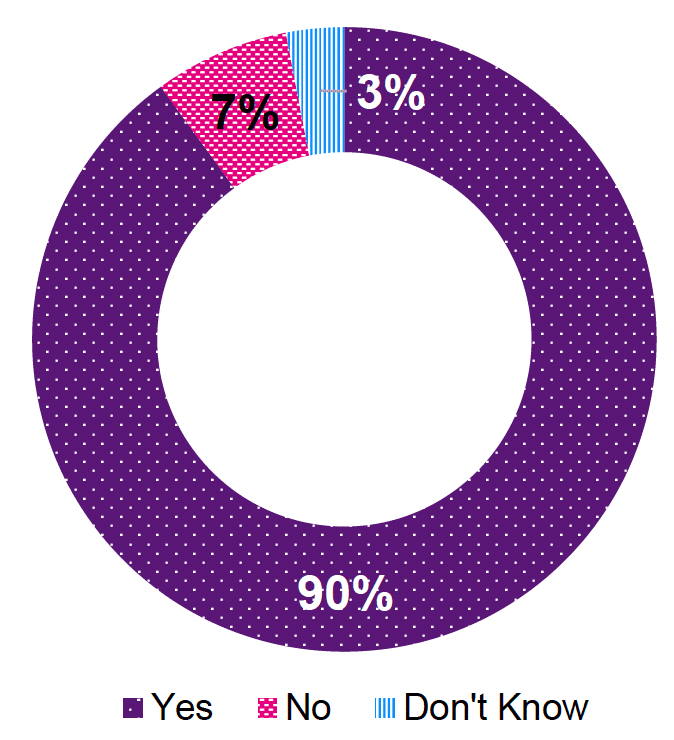
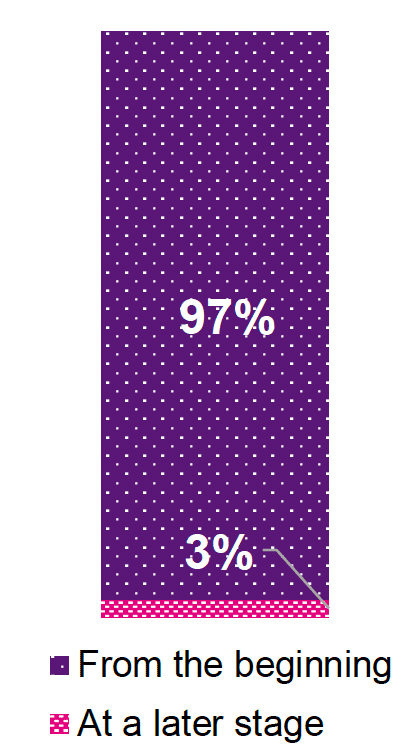
This category again made respondents highlight the importance of treating children as victims within the context of domestic abuse. It was stated that abuse to children and other dependents related to the victim are seen as extensions of her/ him, and attacks are directed at the main victim of domestic abuse by proxy. Killing a child within the context of domestic abuse was described by those who responded as a targeted/ final act of domestic abuse. Those with lived experience unanimously agreed that ‘Children’ should be included as a category within the scope of the model. Some participants with lived experience discussed whether the perpetrator needs to be charged with domestic abuse for it to go through the Domestic Homicide Review process.
Two examples were also given of women who are in prison for the murder of their child despite there being “a horrendous catalogue of domestic abuse that was just swept under the carpet”’.
Professionals and professionals with lived experience stated that a joint process with Child Death Reviews may be the way forward to ensure no gaps are left, as domestic abuse is not the focus of Child Death Reviews. A joint review would endeavour to fill this gap by looking at the death through the lens of domestic abuse instead of a purely child protection lens. It was also mentioned that children visiting or who were around the scene of the crime should be included, if their death is a direct consequence of domestic abuse. Professionals also expressed that children should be included to provide more information surrounding the source of risks.
Including children was considered by some professionals to need a clear definition of the context and criteria for inclusion under a Domestic Homicide Review as opposed to other types of reviews. These considerations are partly:
- To streamline the review process, avoiding duplication of work and resources
- To lessen the burden a review process takes on family members involved.
3. Associated Homicide: This is when someone linked to or associated with the victim of domestic abuse is killed. For example, if someone who has perpetrated domestic abuse kills the victim’s new partner or friend.
“He used to say, if I can’t get you, I’ll get someone close to you.” Respondent with lived experience
Among those who answered this question, the ‘Associated Homicide’ category received fairly high support to be included within the scope of Scotland’s Domestic Homicide Review model, at 83%, with 78% of those choosing to include it also choosing to include it from the beginning of the model’s implementation.

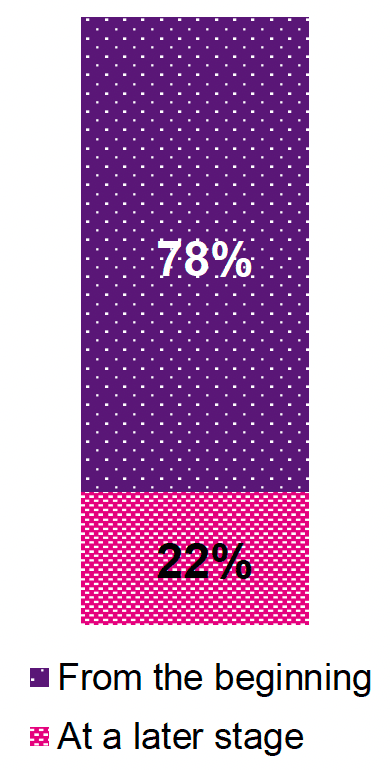
Despite slightly lower rates of support for inclusion within the scope of Scotland’s Domestic Homicide Review model, respondents – especially those with lived experience – expressed that associated homicide is part of the wider experience of domestic abuse and the extent to which perpetrators would go to punish their victim. Some participants said that taking this perspective would alert services to the way in which perpetrators are potentially a danger to other people related to the victim in some way.
Some professionals were not sure if including ‘Associated Homicide’ within the scope would dilute the model, making the scope too wide. Respondents highlighted that if it was to be included, establishing that the motive behind whether the murder was indeed directly linked to domestic abuse, would be paramount.
Other professionals commented on the importance of including ‘Associated Homicide’ within the scope of Scotland’s Domestic Homicide Review model, as separation and new partners are known risk factors for escalation, sometimes used to coerce the victim back into the relationship. Respondents said that this would allow such risks to be recognised and adopted as new best practice. Additionally, including ‘Associated Homicide’ within the scope was described as a way to recognise how far a perpetrator may go to coercively control and continue to perpetrate abuse, which is valuable for learning. It was stated that this is not something that currently has a risk assessment, despite it being commonly encountered by victims.
“This is very relevant as we know that some abusers kill current partners of their ex-partners. To not include these people would prevent the scale and impact (and possible solutions) to the problem being identified.” Professional respondent
Some professionals said that focusing on death/s being a direct result of the perpetration of a pattern of abuse regardless of who the victim is was extremely important. Some professionals with lived experience expressed that associated homicides should be included at a later stage, and that the model should initially focus on the victim and any children/ dependents. Others set clear criteria for including associated homicides when the victim of domestic abuse is murdered as well. For example, in instances where the victim of domestic abuse is not murdered, then an ‘Associated Homicide’ should not be logged.
4. Domestic Homicide-Suicide: This is when the perpetrator of the domestic abuse kills their partner/ex-partner and then dies by suicide. This may also include where the perpetrator has killed immediate and/ or extended family members then dies by suicide.
“When a domestic homicide-suicide happens, it can be a huge event. If there’s no ability for a criminal trial, this should definitely warrant a review. There will be no charges brought – the review will help people move forward.” Professional respondent
The ‘Domestic Homicide-Suicide’ category received the lowest support to be included within the scope of Scotland’s Domestic Homicide Review model at 71%, with 88% of those choosing to include it also choosing to include it from the beginning of the model’s implementation.
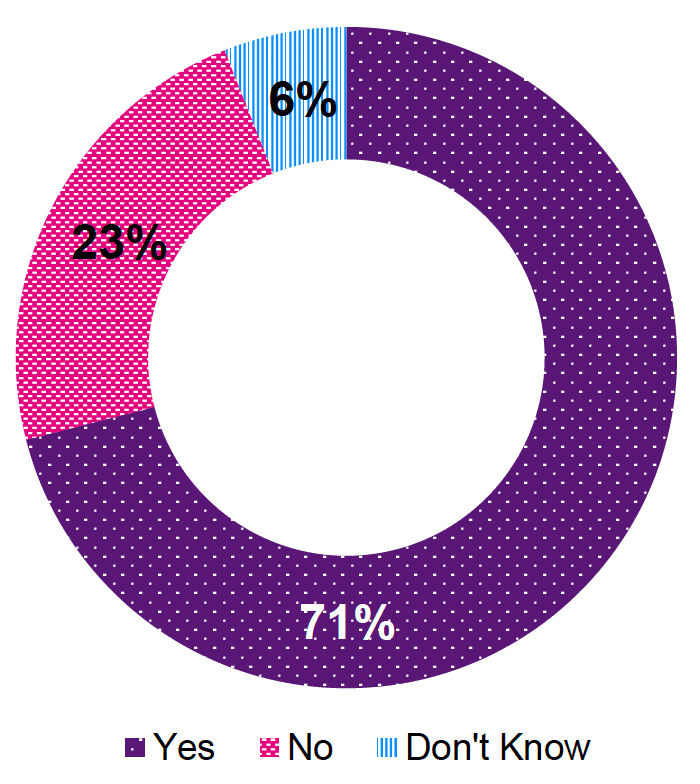
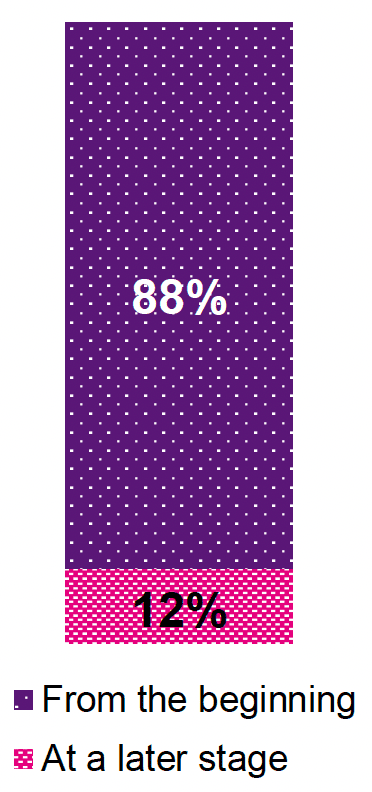
Most professionals with lived experience agreed on the importance of including ‘Domestic Homicide-Suicide’ for learning, and that this was the same as intimate partner homicide and part of the wider issue of perpetrating abuse. Several professionals with direct experience of such cases said that inclusion would enable the review to establish if any agency that may have had contact with the perpetrator could have shared information that may have prevented the homicide-suicide. Professionals with lived experience also highlighted that ‘Domestic Homicide-Suicide’ could include the “so-called” honour-based abuse, and strongly agreed it should be included.
There were a few polarised concerns to including domestic homicide-suicides within the scope, primarily by those with lived experience and professionals with lived experience. Concern was expressed that:
- Resources will be diverted towards the perpetrator if they complete suicide
- It could take away from ‘her’ voice
- A timeframe is needed between murder and suicide
- There is a risk of conflating the purpose of the review
Some of the comments suggest there may have been a misunderstanding that the review would focus on perpetrators and not the victim. Despite the concerns raised, respondents across the board generally acknowledged the importance of including ‘Domestic Homicide-Suicide’ within the scope, as long as it is not focused on the perpetrator as a victim.
5. Familial Homicide: This is when there was abuse or violence present within a family and a family member kills another family member or other family members (for example, parent or siblings). This may be immediate and/ or extended family.
“Really important to include. More and more instances of familial abuse and a lot of learning to be gained.” Professional respondent
Among those who answered this question, the ‘Familial Homicide’ category received the second lowest support to be included within the scope of Scotland’s Domestic Homicide Review model, at 75%, with 80% of those choosing to include it also choosing to include it from the beginning of the model’s implementation.
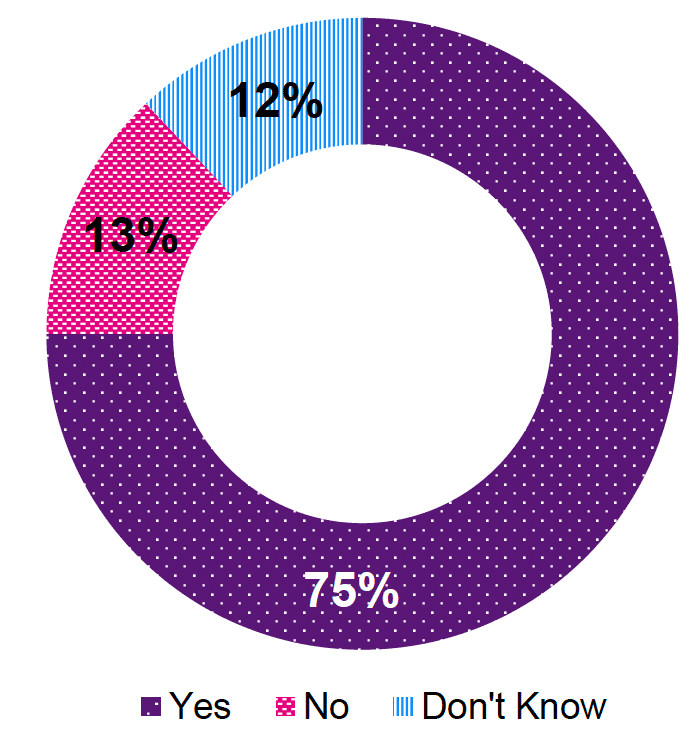
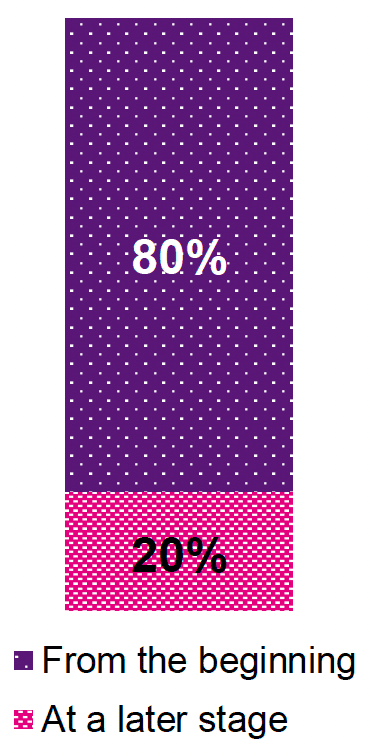
Unlike ‘Domestic Homicide-Suicide’, ‘Familial Homicide’ had less support from professionals, with the highest rates of ‘don’t know’ responses (13%), out of all eight cases presented. There appeared to be some confusion around the definition of familial homicide and what it encompassed. One of the key issues identified with including ‘Familial Homicide’ within the scope of Scotland’s Domestic Homicide Review model across all respondent categories was that it is not compatible with Scottish legislation, and specifically the Domestic Abuse (Scotland) Act 2018. However, while respondents could see potential for including these cases within the scope of Scotland’s model, as it encompasses “so-called” honour killings and scenarios involving forced marriages, which are not included under Domestic Abuse (Scotland) Act 2018, but are heard at Multi-Agency Risk Assessment Conferences.
Overall, those respondents in favour of including ‘Familial Homicide’ stated that it needed to have a basis of abuse related to intimate/ ex-intimate partner violence. Examples were given to include cases where perpetrators utilise children to verbally and/ or physically abuse the victim. Otherwise, familial homicides falling outside of these links would be picked up by other existing learning reviews.
6. Violent Resistance Homicide: This is when a victim of domestic abuse kills the perpetrator of their domestic abuse.
“It may be a kill or be killed situation.” Respondent with lived experience
Among those who answered this question, the ‘Violent Resistance Homicide’ category received the second highest support to be included within the scope of Scotland’s Domestic Homicide Review model at 92%, with 93% of those choosing to include it also choosing to include it from the beginning of the model.
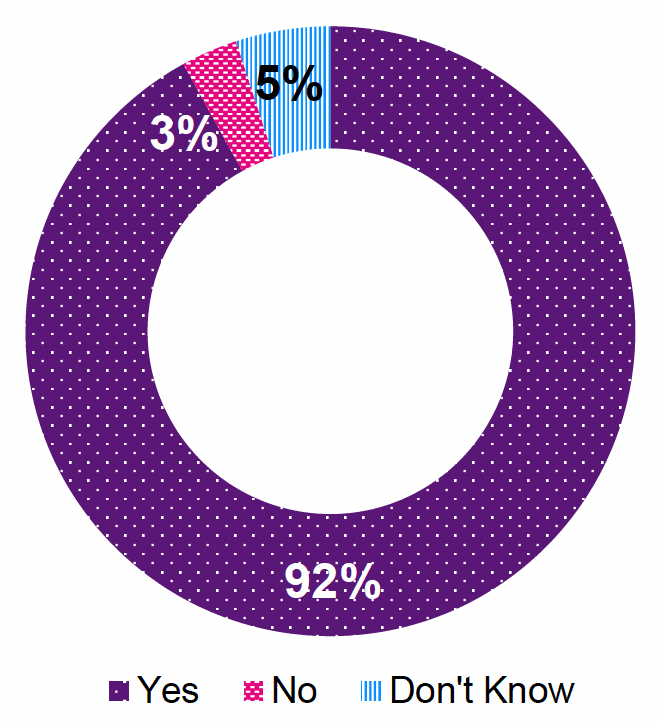
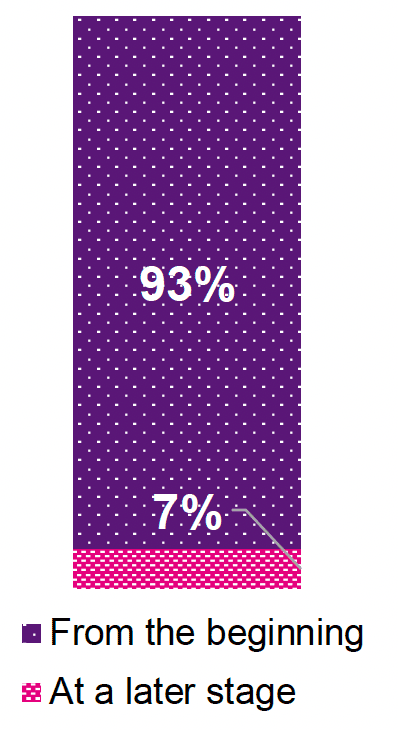
Overall, most respondents across all categories agreed that violent resistance homicide is an important aspect of domestic abuse. Professionals with lived experience expressed concerns about the lack of recognition of ‘Violent Resistance Homicide’ within the criminal justice system.
However, several points were made to ensure that the Domestic Homicide Review process is about learning and not judgement. These points included:
- Ensuring there is a link to domestic abuse
- Raising awareness among professionals and the judiciary on the drivers to violent resistance homicide
- Not to be used to paint the perpetrator as a victim, or ‘victim blaming of victim’
- Focusing on missed opportunities for intervention and learning
7. Domestic Abuse Related Suicide: This is when a person has died by suicide and there was a clear link to domestic abuse prior to their death.
“I went to the police and nothing changed. I felt suicidal, I liked life, but mostly I felt out of control. I told people close to me this. I think if I had taken my life, nothing official would have said that it was because of domestic abuse that I'd taken my life.” Respondent with lived experience
Among those who answered this question, the ‘Domestic Abuse Related Suicide’ category received the third highest support to be included within the scope of Scotland’s Domestic Homicide Review model at 91%, with 78% of those choosing to include it also choosing to include it from the beginning of the model.

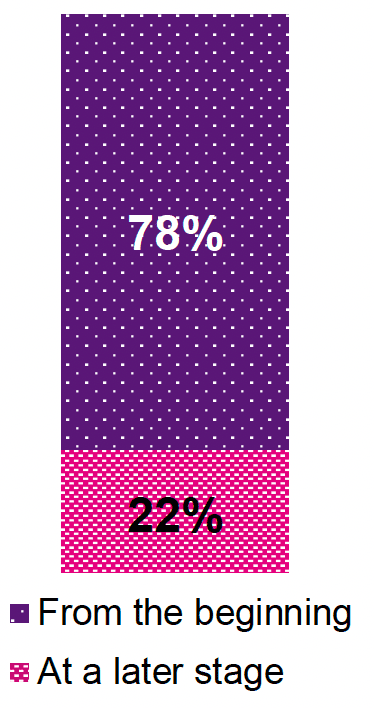
Across all respondent types, there was overall high support to include ‘Domestic Abuse Related Suicide’ within the scope of the Scottish model. Respondents highlighted how ‘Domestic Abuse Related Suicide’ can be an extension to coercive control and the subtle ways in which it may manifest. Acknowledging this link can help raise awareness of identifying those at risk of suicide among services directly supporting victims of abuse.
Across all respondent types there was consensus that accountability for the role the perpetrator had when the victim died by suicide is vital. It was suggested that often, in such cases, there is no trial and there are no answers or closure for family members. Recognising ‘Domestic Abuse Related Suicide’ within the scope of the model would help answer questions and identify gaps in communication and/ or intervention.
From those professionals who answered the question, 7% responded ‘don’t know’, as they were unclear on certain parameters of the definition of ‘Domestic Abuse Related Suicide’ and how it would be established, namely:
- clear link needed with guidance on how this is established
- the timing of the suicide in relation to the domestic abuse
- proving an overdose was a suicide when there is known history of domestic abuse
- the term suicide contradicts the name of the model which includes homicide
- avoid duplication with suicide review processes
- Respect to service agencies such as Scottish Women’s Aid and Abused Men In Scotland, and the evidence they have from directly supporting victims
8. Near Death: This is when there has been an attempted murder where, but for medical intervention, the person would have died as a result of domestic abuse.
“This will be the biggest learning on the impact domestic abuse has on victims.” Respondent with lived experience
Among those who answered this question, the Near Death category received the fourth lowest agreement to be included within the scope of Scotland’s Domestic Homicide Review model at 87%, with 90% of those choosing to include it also choosing to include it from the beginning of the model.
All those with lived experience agreed that ‘Near Death’ should be included within the scope of Scotland’s Domestic Homicide Review model. Respondents with lived experience felt that this would allow the victim’s voice to come forward.


Although agreement levels are relatively high, professionals and professionals with lived experience cautioned on the number of cases this would potentially bring forward. Multi-Agency Risk Assessment Conferences figures were sighted as a cause of alarm, since near deaths are very common. Interventions were expanded to include escaping or surviving a murder attempt. ‘Near Deaths’ were seen as important to include, however, ensuring the Domestic Homicide Review model has the capacity to review the potential volume of these cases is prudent.
9. Animals: Should animals killed or injured as part of a domestic homicide be included within the review process?
“Often, cruelty to animals is a red flag/ warning sign of future harm and homicide. Valuable lessons to be learned. Killing an animal results in a level of fear – bringing death home.” Professional respondent
Over 75% of respondents across all three respondent types agreed that animals killed or injured as part of a domestic homicide should be included within the review process. It is important to emphasise that this would not be a review for the animal in its own right, but rather the killing or harming of an animal would be considered alongside other factors and circumstances such as the killing of a partner/ ex-partner.

Across all respondent types, abuse of animals was acknowledged to be a risk factor[4] and its link to control can potentially highlight missed opportunities for intervention leading up to the homicide, such as during vet visits. It was also mentioned that cruelty to animals is included within Domestic Abuse (Scotland) Act 2018 and is one of the questions from the Domestic Abuse, Stalking and Honour Based Violence (DASH) and Risk Identification Checklist (RIC). Comments were made that this would correspond well by including details of animals harmed or killed as part of a domestic homicide where relevant.
Disagreement was mostly due to respondents misunderstanding that including this information would be part of a DHR and not constitute a DHR in and of itself.
10. Other types of situations not included: What other situations should be the subject of a Domestic Homicide Review process?
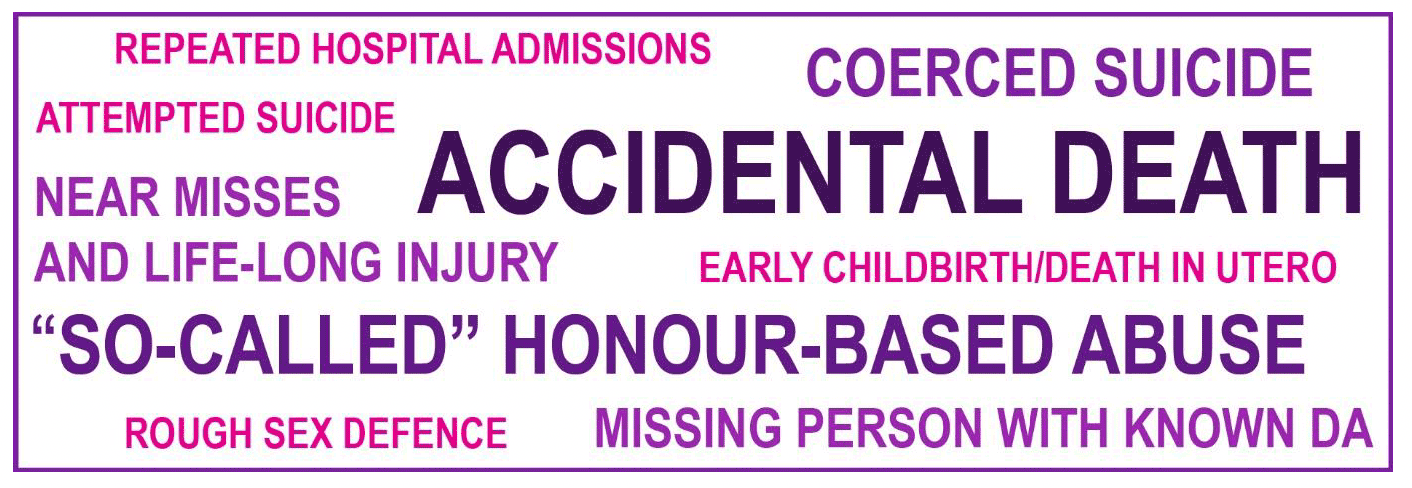
Flexibility and Timing
11. Flexibility: Should the system be strictly defined or include some flexibility?
“As family members bereaved by crime, we are encountering how important flexibility in systems is, having faced barriers to finding out information…” Respondent with lived experience
From those who answered this question, almost a quarter (27%) selected the option whereby the review scope should be ‘strictly defined’, and circumstances that do not meet the criteria should never be subject to a Domestic Homicide Review. Almost three quarters (73%) of respondents selected the option where the system should ‘include some flexibility’, so that there is a process for deciding to carry out a Domestic Homicide Review in situations that do not strictly meet the criteria, but where there might be valuable lessons to be learned.
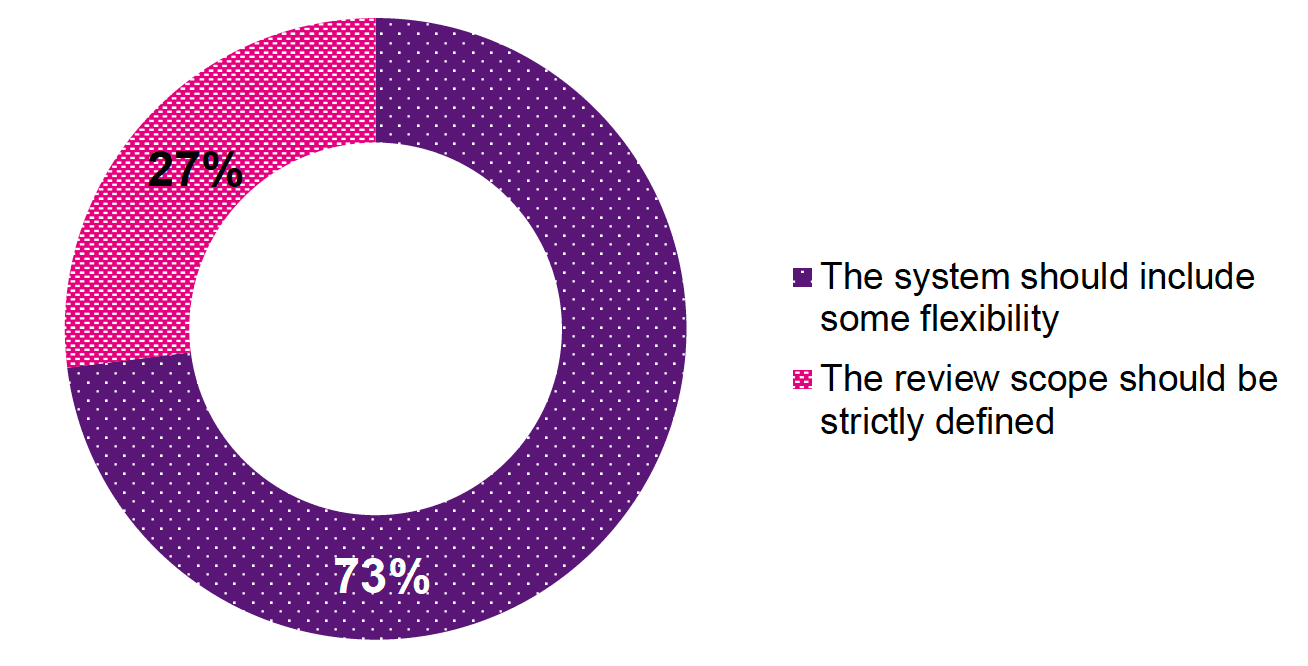
All respondents with lived experience except one and the majority of professionals selected the option that Scotland’s Domestic Homicide Review model should include some flexibility. The most important aspects of having a flexible system according to respondents included:
- Ensuring learning where it may be missed, not all domestic homicides are obvious.
- Women can die as a result of prolonged physical abuse but the death may occur outside of an attack.
- A “pre-domestic homicide review” review process would allow cases to be assessed as to whether they meet the domestic homicide review definition or not, and as such flexibility should be afforded.
- Flexibility at the start until knowledge and expertise are gained.
Respondents who did not agree that the system should include some flexibility and instead should be strictly defined, cited the following reasons:
- Strict criteria necessary to ensure the aim of Domestic Homicide Reviews is achieved.
- A system with no structure loses its power, flexibility can have implications for domestic abuse, diluting circumstances and losing focus.
12. Timing: When should a Domestic Homicide Review commence?
“Criticism has been made of schemes which start only after a criminal investigation has been completed. We should learn from deficits/criticism of such schemes.” Professional respondent
A quarter (75%) of all respondents selected that the timing of a Domestic Homicide Review should take place as soon as possible, including in parallel to a police investigation, criminal/ civil proceedings/ Fatal Accident Inquiry. Around 16% of respondents, mainly professionals, selected that a DHR should be undertaken following conclusion of any police investigation, criminal/ civil proceedings/ Fatal Accident Inquiry. Less than 10% of respondents selected ‘Don’t know’.

The majority of respondents across all respondent types selected that the timing of a Domestic Homicide Review should be as soon as possible. Reasons provided for choosing this are included in Figure (24).

Professionals and professionals with lived experience shared their thoughts on the practical implications of implementing the Domestic Homicide Review as soon as possible. A summary can be seen in Figure (25) below.

Reservations around undertaking a Domestic Homicide Review as soon as possible are included in Figure (26) below.

13. Decisions made by professionals: Should reviews have the option to consider the decisions made by professionals in response to the immediate needs of those directly associated with the person who has died?
“This may help to identify what services are required in the immediate aftermath of a domestic homicide, supporting families with practical arrangements and emotional grief.” Professional respondent
This question was asked to professionals and professionals with lived experience only. There was some confusion expressed by participants around the meaning of this question. This may explain the split in those who agreed that the review should have the option to consider the decisions made by professionals in response to the immediate needs of those directly associated with the person who has died.
A slight majority of respondents (48%) agreed that the review should have the option to consider decisions made by professionals in response to dependents, and 43% of respondents disagreed with the review process considering these decisions. The remaining 9% of respondents selected ‘Don’t Know’.
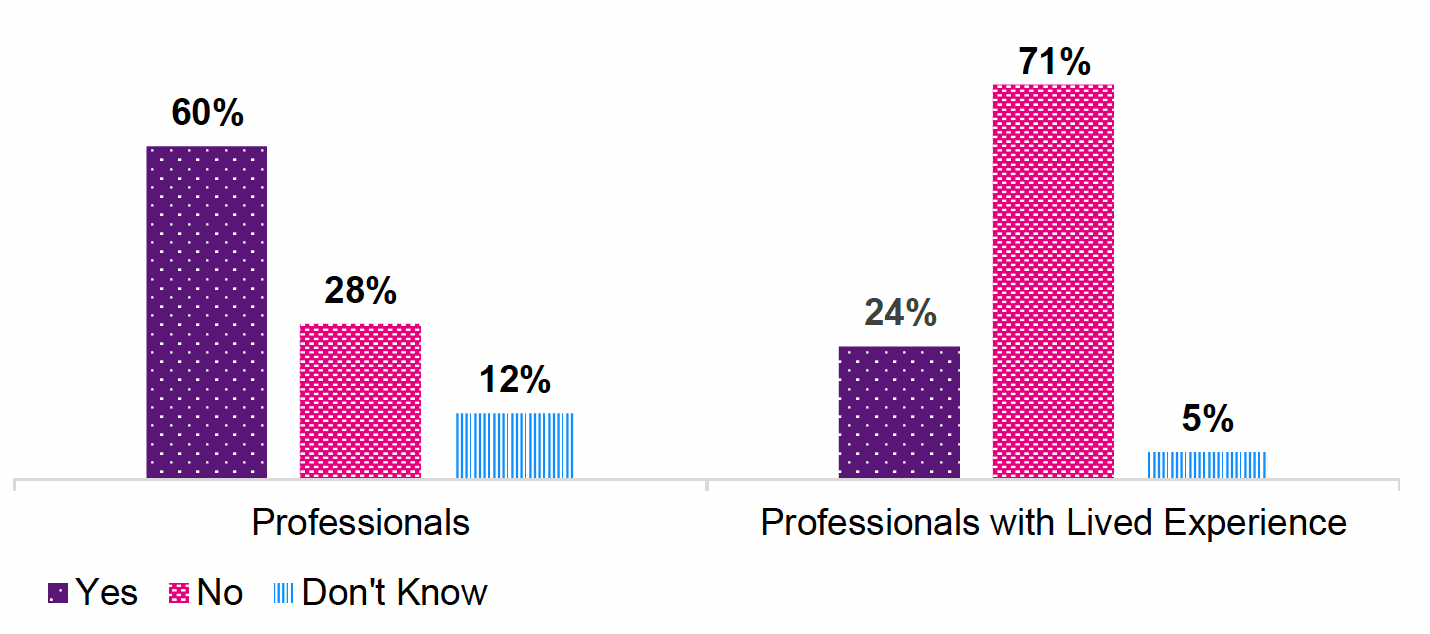
“I think this is essential because without this view it's very hard to get a holistic view of the situation and accountability for agencies to learn and do better in the future.” Professional respondent
Most professionals agreed that reviewing these decisions is really important and is essential to learning and gaining a holistic view of how the homicide has impacted children and other dependents directly associated with the victim. This learning could inform future practice and guidance. Respondents stressed that reviewing decisions made about children and dependents ensures that the whole reach and impact of domestic abuse, which can take on many forms and be ongoing and pervasive, is responded to entirely by services.
Professionals agreed that ensuring a trauma-informed, child-centred and rights-based approach is important to mitigating the consequences of the experience on the child/ children. Key considerations here are harmonious timelines and the ability to establish consequences to decisions around placements and contact. Reference was also made to the intended amendments to the UK Government’s Victims and Prisoners Bill by which parental responsibilities are to be automatically suspended following a person’s conviction of murder/ voluntary manslaughter. This is also known as Jade’s Law[5]. However, it is important to note that Jade’s Law would only be applicable in England and Wales. The current position in Scotland remains that an application can be made to the civil courts under Section 11 of the Children (Scotland) Act 1995[6] to remove a person’s parental responsibilities.
Those who disagreed, either expressed confusion about the way in which the question was worded, or mainly expressed the assumption that there must be an established mechanism that would be reviewing such decisions already.
Initial Case Review
In other jurisidictions that have a Domestic Homicide Review model, an Initial Case Review often takes place. This identifies and considers cases before the decision to proceed with a full review is made. This also happens for some existing learning reviews in Scotland.
The Domestic Homicide Review Policy Team within Scottish Government asked this question with the intent of developing a model that is open, fair, and transparent. It proposed that building in an Initial Case Review to the process would support this, as well as the inclusion of a challenge mechanism if the decision is taken not to proceed to a full review.
14. Initial Case Review: Should the process include an Initial Case Review?
Respondents were asked whether an Initial Case Review should precede a domestic homicide review. Over three quarters (76%) of respondents agreed that an initial case review should be undertaken.
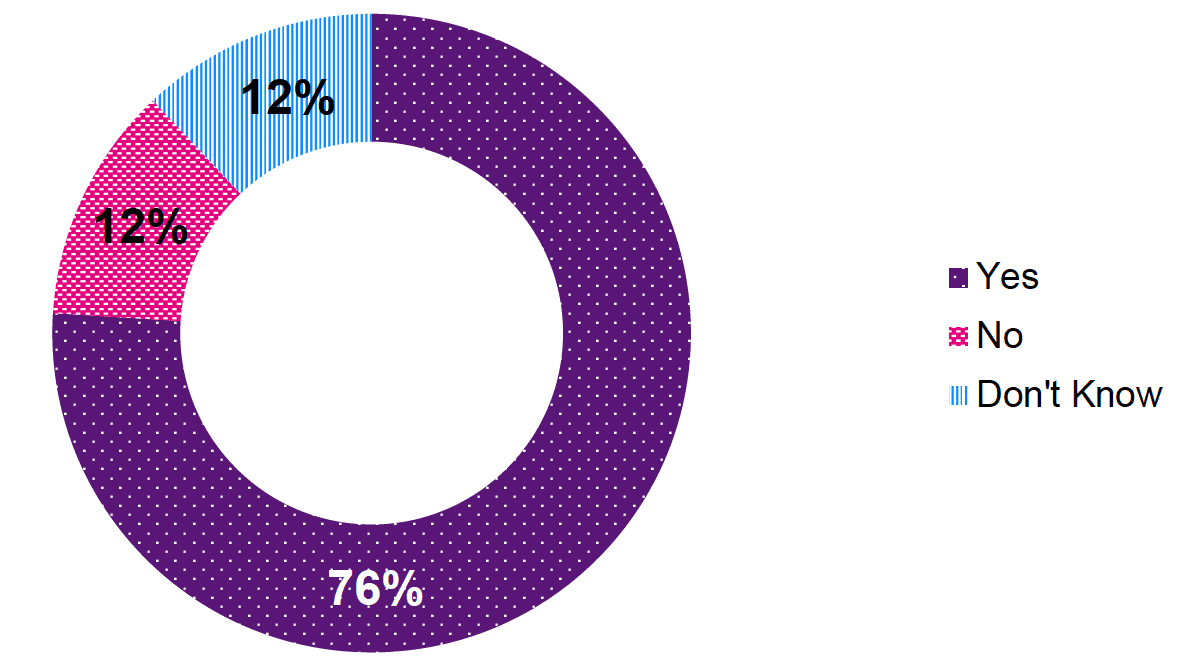
Respondents agreed that Initial Case Reviews have the potential to filter cases as long as it is a quick process and does not prolong the commencement of a Domestic Homicide Review. It was commented that an Initial Case Review can ensure that the process is open and fair, as long as clear parameters are set in place around Domestic Homicide Reviews. It was also stated that Initial Case Reviews should not detract from a Domestic Homicide Review, and the system must be robust.
Professionals agreed that the sharing of information at the beginning was vital, however, where it is evident that a domestic homicide has occurred, there should not be a need for an Initial Case Review. Some professionals felt strongly about not having Initial Case Reviews, as they have been used in both Child and Adult Protection Learning Reviews and have since stopped. Whereas others thought Initial Case Reviews work well elsewhere and provided social work as an example. Some respondents commented that cases that meet the criteria should be reviewed regardless. Others felt that there needed to be a specialised group that undertakes Initial Case Reviews and has expert knowledge in assessing these cases.
Respondents with lived experience expressed concerns around the need to allow Domestic Homicide Reviews to take place by ensuring that an Initial Case Review is not about minimising failings by services and authorities. It was stated that Initial Case Reviews should be an exercise to include, rather than exclude.
15. Referrals by professionals: Should professionals and/or other agencies be able to refer a death where abuse is suspected, to the agency/organisation that will undertake the initial case review?
Among those who answered this question, 90% of respondents agreed that they should be able to, with 7% of professionals and professionals with lived experience responding ‘don’t know’, and the remaining 3% of professional respondents disagreeing.
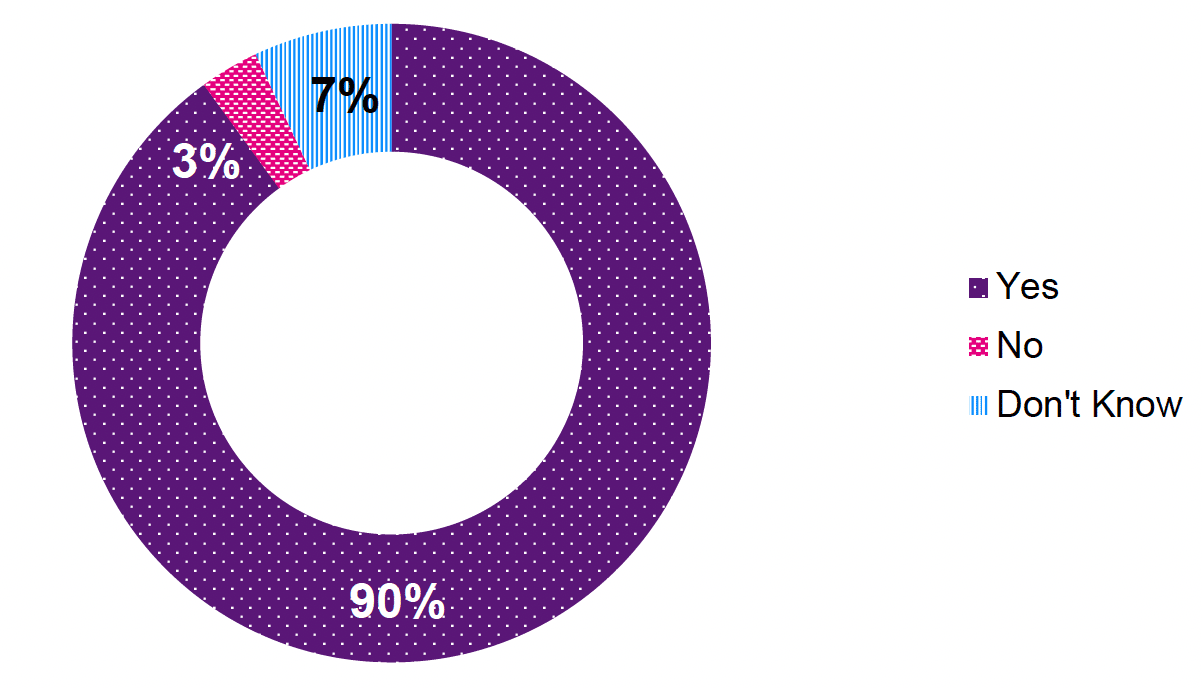
There was agreement across all respondent types that professionals and agencies can contribute towards establishing the circumstances prior to the death by knowing the victims on a personal level.
Some professionals stressed that there needs to be an onus rather than ‘be able’ to refer by professionals and agencies. Having this option was also seen as important to identify ‘hidden victims’, such as accidental deaths and suicides, as agencies often hold a wealth of information on women/ men who have been in contact with services. It was stated that professionals and agencies can be best placed to identify links to domestic abuse where no formal police report has been made. It was also noted that for male victims, domestic abuse is often a hidden issue that “can fly under the radar”.
Professional respondents suggest that a new framework would need to be included to support practitioners to be clear about the criteria for referral to Initial Case Reviews, given some of the types of Domestic Homicide Reviews that are being proposed.
Some professionals found the meaning of this question confusing and this was reflected in their comments.
16. Referrals by families /friends/ carers: Should families/friends/carers be able to refer a death where abuse is suspected, to the agency/organisation that will undertake the initial case review?
Respondents were asked whether families/ friends/ carers should be able to refer a death where abuse is suspected to the agency/ organisation that will undertake the Initial Case Review. Among those who answered, 74% of respondents agreed that they should be able to, with 15% of all respondents categories selecting ‘don’t know’ and the remaining 11% (professionals and professionals with lived experience) disagreeing.

The majority of respondents agreed that families and friends should be able to refer a death as:
- It is not always professionals who note the abuse or death, and there are cases where there is no professional involvement.
- Carers should be included, particularly for disabled people who are extra vulnerable. Most of the information they hold won't be recorded as part of a criminal justice process, but they'll have a lot to contribute.
- Different route for when services are missing key elements of domestic abuse. Some respondents with lived experience, shared that the police had downplayed a lot of the experiences that fall within domestic abuse.
- Ability to pass on non-corroborated information that the police won't have been able to use – information that friends and family know, that is pertinent but doesn’t or wouldn't come out during a police investigation / criminal justice process - but is majorly important in terms of predicting domestic abuse death.
- Domestic abuse is hidden (particularly in some cultures or within some demographics such as older people). If services are not involved and/ or aware of domestic abuse, families could provide valuable information.
- Families and friends are able to tell the review panel things that they won't tell other people and describe changes of behaviour – some of which are big indicators.
- Some professionals and professionals with lived experience expressed that referrals by families and friends should be done through a support agency or advocacy service, especially in cases where the death was a suicide and there was also domestic abuse present.
There was some confusion as to whether families and friends should be able to refer a death where abuse is suspected by professionals and professionals with lived experience. Whereas others felt that this was vague and wide ranging where no confirmed criminality or concern was yet established. Other concerns raised by those with lived experience was that there could be a danger of friends/ family members expecting to find answers from the domestic homicide review process even if it does not fit the criteria.
Contact
Email: dhrmodel@gov.scot
There is a problem
Thanks for your feedback